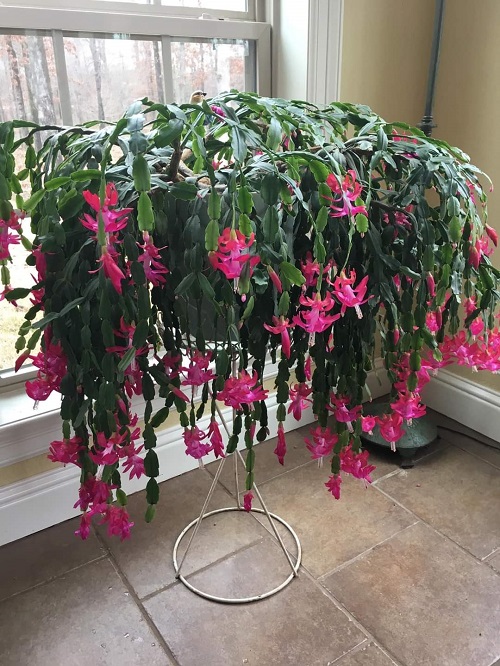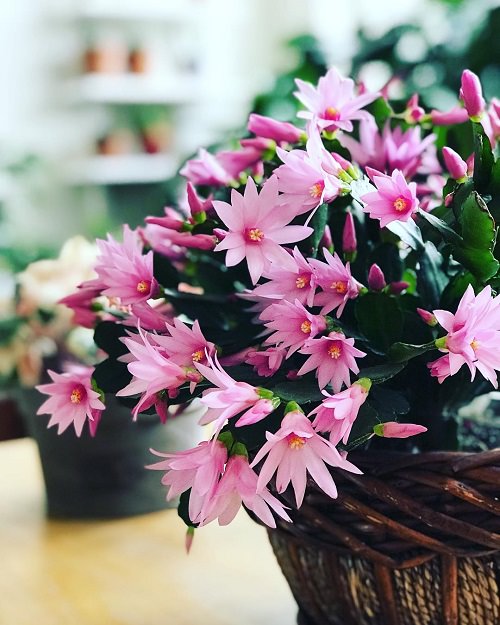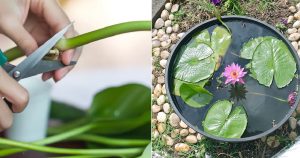Follow the easy yet effective Christmas Cactus Care Tips to keep this festive plant blooming year-round in your home.
Christmas Cactus stands for holiday cheer and adds perfect festive vibes to every household! If you, too, want to glaze up your home with its lush foliage and blooms, check out the best Christmas Cactus Care Tips here!
Botanical Name: Schlumbergera bridgesii
USDA Zones: 9–11
Christmas Cactus Information
Christmas Cactus (Schlumbergera bridgesii) is native to the coastal mountains of south-eastern Brazil. It belongs to the cactus family called Cactaceae. In terms of appearance, Christmas Cacti have flat, segmented stems that look more like leaves. The stems are green and resemble the shape of a crab’s claw. They don’t have thorns or spines.
These cacti tend to grow moderately, with stems extending outward. The height of a mature Christmas Cactus can reach up to 1 to 1.5 feet, and its spread, or width, can be about 1.5 to 2 feet.
Christmas Cacti produce colorful flowers, which can be pink, red, white, or purple. The flowers are typically tubular in shape and appear at the tips of the stems. These flowers usually bloom in the winter, often around Christmas, hence the name.
The foliage of the Christmas Cactus is made up of flat, segmented stems. The stems are slightly glossy, dark green, and not prickly.
Propagating Christmas Cactus
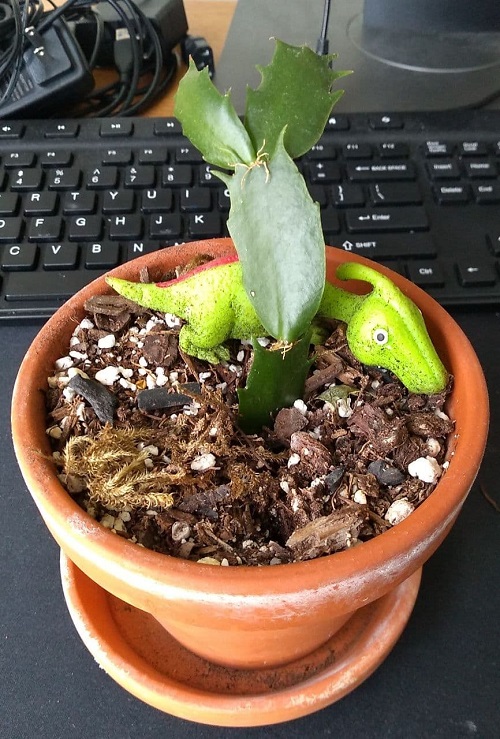
To propagate a Christmas Cactus, take a healthy stem cutting in spring or early summer, allow it to callus for a day or two, and then plant it in well-draining soil with one or two segments buried. Cover the pot with a plastic bag to create a humid environment and place it in indirect light. Regularly check and lightly water the cutting, and after a few weeks to a couple of months, when roots have developed, you can transplant them into a larger pot or a permanent location.
Requirements for Growing Christmas Cactus
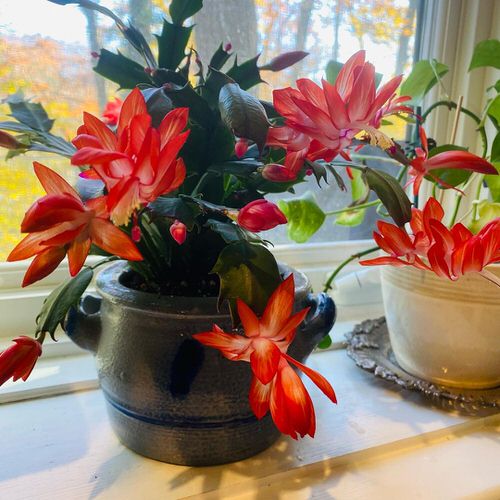
Light
Grow Christmas Cacti in bright, indirect light. They prefer a location with bright, filtered sunlight. East or north-facing windows are ideal for these plants, as they get the morning sun or indirect light throughout the day. They can also thrive under fluorescent lights or in spots with dappled sunlight.
Avoid placing them in direct sunlight or harsh, intense light, as it can scorch their leaves or lead to stress. Provide the right indirect light for beautiful blooms during the holiday season.
Soil
Use a well-draining, slightly acidic soil mix for growing Christmas cactus. Prepare this by combining equal parts of peat moss, perlite, and vermiculite. The peat moss helps retain moisture, while perlite and vermiculite improve drainage and aeration. Aim for a soil pH between 5.5 to 6.2 to create an environment that supports the healthy growth of your Christmas Cactus.
Watering
For Christmas Cacti, water when the top inch of the soil feels dry to the touch. Water thoroughly, allowing excess water to drain from the pot. Avoid waterlogging, as it can lead to root rot. Reduce watering in the dormant period (late winter) and increase it when the plant is actively growing (spring and summer).
Temperature and Humidity
Christmas Cacti thrive in a temperature range of 60 to 70°F (15 to 24°C. They prefer a mild and stable environment. In terms of humidity, they do well with moderate humidity levels, but they can tolerate lower humidity.
However, in dry winter months, it’s a good idea to provide some extra humidity through methods like misting or using a humidity tray to keep the air around the plant slightly more moist.
Christmas Cactus Care
Fertilizer
To promote healthy growth, feed Christmas Cactus with a balanced, water-soluble fertilizer with a formulation of approximately 20-20-20 or 10-10-10 (N-P-K) during their active growing period (spring and summer). Dilute the fertilizer to half the recommended strength and apply it every 4-6 weeks. During dormancy (late fall and winter), reduce or cease fertilization as the plant’s growth slows down. Balanced fertilizers provide essential nutrients for your Christmas Cactus without overfeeding it.
Pruning
Pruning is best done in spring and can be done until late spring for best growth. It will then branch out with new leaves, making the plant bushier.
Re-potting
The plant loves to stay ‘root-bound.’ It is advised to re-pot a Christmas cactus every three years to a slightly larger pot. Also, use a fresh potting mix while repotting.
Pests & Diseases
The most common pests that bother Chrismas cacti are fungus gnats, flower thrips, aphids, spider mites, and mealybugs. To avoid these, don’t water your plant too much, as these pests like soggy soil. If they do show up, you can use soapy water or horticultural oil to remove them. You can also use a cotton ball soaked in alcohol to remove these tiny pests gently.
Fungal diseases are a problem when you water your plant excessively. Overwatering can lead to issues like Fusarium and Phytophthora, which cause stem rot. Fusarium shows up as brown spots on the stem near the soil. If you catch it early, you might save your plant by letting the soil dry out and using a fungicide as directed. Phytophthora makes the stem look wet and is usually deadly for the plant.
The Secret Tip!
The secret tip while growing a Christmas cactus is to make it bloom around the festive time! Proper light and temperature are the most crucial part of making a Christmas cactus bloom.
For flower buds to form, expose the plant to 4 to 5 weeks of total darkness for 12 to 14 hours a day. Make sure that it also gets 2-3 hours of morning sunlight. After the buds come in, the plant needs a temperature range between 55-65°F or 12-18°C.
Moisten only when the topsoil feels dry to the touch. This will allow the plant to enter dormancy, encouraging it to bloom. Also, avoid moving it from one location to another. It will cause a sudden change in light and temperature conditions, which will drop off the forming flower buds.
Types of Christmas Cactus
1. Schlumbergera x buckleyi (True Christmas Cactus):
This is the classic Christmas Cactus, with flattened stem segments and flowers. It typically blooms around Christmas.
2. Schlumbergera truncata (Thanksgiving Cactus):
While resembling the Christmas Cactus, the Thanksgiving Cactus blooms a bit earlier, usually in late November. Its stem segments have pointed claw-like edges.
3. Schlumbergera russelliana (Easter Cactus):
Easter Cacti have more rounded and scalloped stem segments. They bloom around Easter in spring.



